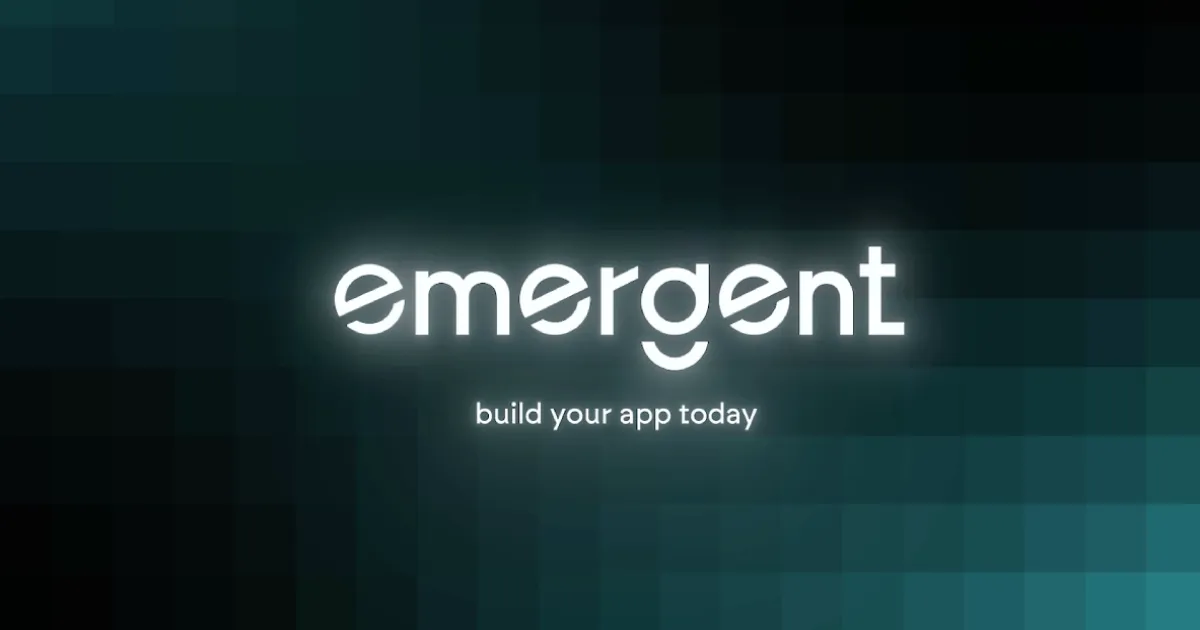Unlock Your Idea: Build Production-Ready Apps with Emergent – The AI “Vibe Coding” Platform
By - Blink AI Team / First Created on - October 30, 2025

Turn Your Idea Into Reality With Emergent
Imagine you have a terrific idea — maybe a niche productivity tool, a customer-facing web app, or an internal dashboard for your team. Instead of assembling a dev team, hiring freelancers, or wrestling with boilerplate setup, you simply describe what you want in plain English and hit go. That’s exactly the promise of Emergent: an AI-powered “vibe coding” platform that handles the heavy lifting of full-stack development.
In this blog we’ll explore:
-
What Emergent is → and why it matters
-
Who it’s for (and who it isn’t)
-
How it works – step by step
-
Key benefits & what you should watch out for
-
Pro tips to get the most out of it
What Is Emergent?
At its heart, Emergent is a developer-level platform powered by autonomous AI agents that convert conversational prompts into fully deployed, production-ready applications:
-
It handles frontend, backend, database, authentication, and deployment — all from your prompt.
-
It offers a conversational interface (you talk to it) rather than dragging modules or filling out forms.
-
It supports developers, non-technical founders, internal tool builders and anyone who wants to go from idea → product faster.
Why It Matters Now
We’re seeing a shift: building software used to require deep coding, dev teams, and months of work. With Emergent:
-
You reduce time from idea to launch.
-
You lower the cost barrier (no big engineering team needed).
-
You empower non-developers (founders with a vision, ops teams, small business owners) to create custom apps.
-
It removes a big friction point: engineering. According to its own data, Emergent achieved very rapid growth, showing demand for this kind of tool.
Who Should Use Emergent?
Ideal for:
-
Solo founders who have an idea but no coding team.
-
Product managers or internal operations teams who want to build internal tools quickly.
-
Small businesses that need custom software but can’t afford full-stack teams.
-
Non-technical creators who want to experiment with apps and MVPs.
Maybe less ideal for:
-
Projects with extremely niche or cutting-edge tech requirements (where manual coding might be more efficient).
-
Teams that already have established engineering stacks and processes (though they may still benefit).
-
Situations where you want full control over every line of code or infrastructure detail — for some users, Emergent may abstract away too much.
How Emergent Works – Step by Step
-
Describe your idea: You start with a plain-English prompt like “build a CRM with login, dashboard, Stripe payments, mobile responsive”.
-
Clarify preferences: The agent will ask about frameworks, languages, specific features, any constraints.
-
Project structure generation: Emergent creates an initial scaffold of frontend + backend based on your input.
-
Iteration & feedback: You review, provide feedback, refine.
-
Testing & deployment: The platform automatically runs tests, handles authentication, infrastructure, and deploys the app.
-
Launch & scale: The app is live, and you can iterate further (e.g., add features, scale usage).
Key Benefits You’ll Love
-
Speed: Big reduction in time to launch — you can go from concept to live product far faster.
-
All-in-one: Frontend, backend, infra, deployment all handled. No separate vendor/tool for each layer.
-
Accessibility: Removes dependencies on deep engineering skills — you focus on the what, not the how.
-
Production grade: It’s not just prototypes — Emergent emphasizes full-stack, production-ready applications.
-
Affordable: Some reviews suggest it’s more cost-efficient than hiring full engineering teams.
Things to Consider
-
Learning curve / alignment: Even though you’re giving a prompt, you’ll still need to guide the system with clear inputs and feedback so the output matches expectations.
-
Customization complexity: If you have extremely bespoke or cutting-edge features, you might hit limitations or require manual tweaks.
-
Cost vs scaling: While it may save money vs full engineering initially, you’ll want to evaluate how pricing, usage, maintenance scale-up compare over time (some users note this).
-
Code ownership and flexibility: As with many AI-generated platforms, you’ll want clarity on how much you can modify/generated code, integrate external systems, or port away if needed.
-
Early-stage platform: It’s relatively new and evolving. While growth is strong, you may encounter some rough edges.
Pro Tips to Get the Most from Emergent
-
Be highly specific in your prompt: The more detail you provide (features, tech stack, UX, constraints) the better the result.
-
Mention your preferred technologies: Do you want React, Next.js, Node.js, PostgreSQL, Stripe for payments? Stating this helps the agent choose the right stack.
-
Use references: Show examples of interfaces or apps you like; this helps guide the design.
-
Iterate fast: Once you get the first version, test it, give feedback, refine immediately.
-
Think long term: Plan for maintenance, scaling, data-ownership, integrations from the beginning.
-
Use for MVPs and internal tools: Get something live quickly, learn from users, then evolve.
Final Thoughts
If you’ve ever hesitated on an app idea because “engineering is too hard / too expensive”, then Emergent may be your gateway. It flips the script: you focus on idea, user value, product vision, and the platform does the heavy dev lift. And it’s especially compelling in a world where speed, lean experimentation, and low-code/no-code solutions are gaining ground.
That said, it’s not a magic wand — clarity in prompt, thoughtful iteration, and awareness of the platform’s trade-offs will still determine success.
For many entrepreneurs, internal teams, and creators, Emergent offers a powerful accelerator: ideate today, launch tomorrow.
For many entrepreneurs, internal teams, and creators, Emergent offers a powerful accelerator: ideate today, launch tomorrow.